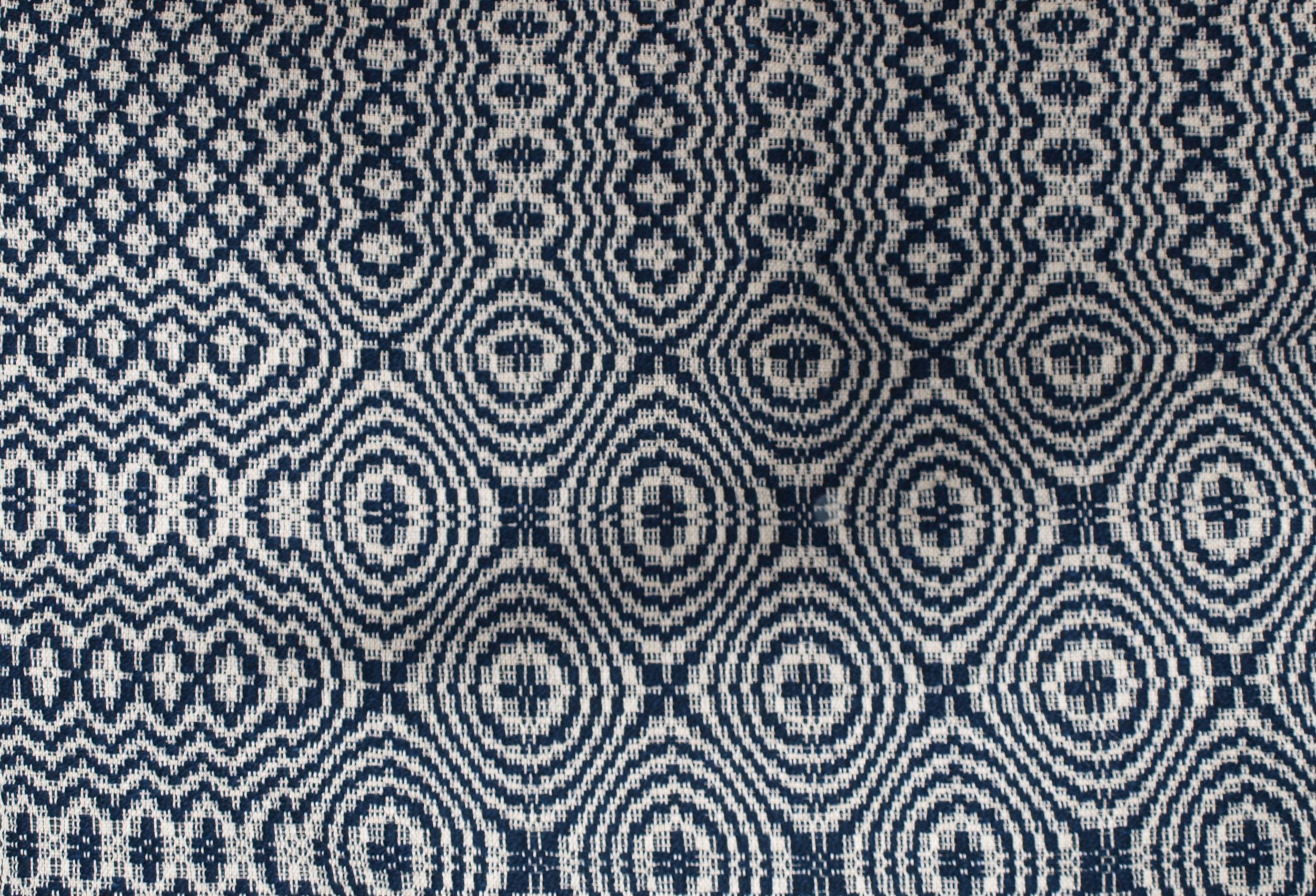Period Coverlets
Canada has a rich tradition of woven coverlets. In 19th century Ontario, several weave structures were used to create both geometric and figured designs. Customers often supplied spun and dyed yarn for their local weaver, making the process a collaboration between customer and weaver.
At Upper Canada Weaving, we handloom weave traditional Canadian coverlets using cotton or linen with commercially produced or custom spun wool, according to our client’s specifications. Contact us to discuss a historic pattern and technique from the rich repertoire of 19th century Canadian coverlets.
Summer and Winter Coverlet
The Summer and Winter coverlet structure dates to the late 18th and early 19th century in Canada. Because the structure has a network of tie-downs, the block patterns can be quite large and bold as seen in this example which was collected in New Brunswick. The wool for this coverlet was sourced to a farm in Norfolk County, Ontario and was small batch dyed in indigo.
“Nine Roses for Miss Annie” Floatwork Coverlet
This coverlet was woven in the floatwork structure. Weavers in the 19th century referred to this structure which uses alternating throws of plain weave and a wool pattern throw as floatwork, single and sometimes just coverlet or coverlid because it was such a popular form of coverlet weaving.
A historic coverlet (left) in the collection of Black Creek Pioneer Village in Toronto, Ontario inspired this visually identical reproduction for a New York home (right). We executed the pattern, whimsically named “Nine Roses for Miss Annie,” in a cotton warp and linen weft, with commercially spun and dyed wool.
Samuel Fry Reproduction Floatwork Coverlet
This floatwork coverlet is a reproduction of a textile woven by 19th century weaver, Samuel Fry (1812-1881) from Vineland, Ontario. The original coverlet is from the collection of the Lincoln Museum in Jordan Ontario. This reproduction was woven with custom spun Border Leicester wool dyed in madder and indigo.
“Keep Me Warm One Night” Floatwork Coverlet
This floatwork coverlet is based on a 19th century draft called “Keep Me Warm One Night” from Nova Scotia. Twenty-four threads per inch was a common density for Canadian coverlets of the time, and we designed this one to have both an outside border that fits the intended bed exactly. The customer requested black wool for the pattern on a linen warp and weft. We sourced undyed black wool from Norbouillet sheep in Pine Hollow, Ontario which was custom spun at Wellington fibres in Elora, Ontario.
Linen was grown in eastern Canada in early 19th century, and commonly used for coverlet weavings. Some historic coverlets from this period also feature an additional inside-border in a narrow diamond twill weave.















